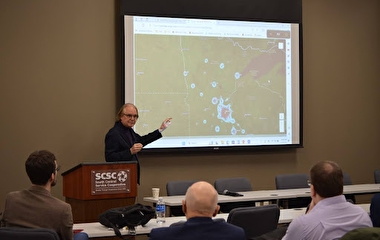Transportation is one of the largest barriers youth in Minnesota face when seeking employment and training. This is especially so in industries such as construction and agriculture, which often require a mobile workforce, and in retail and service jobs.
To better understand the current landscape and investigate possible solutions, the Minnesota Council on Transportation Access (MCOTA) sponsored a study this year by U of M researchers. “We have found employers who want to give our youth program participants a chance at a job as long as these young adults can get to work on time every day,” says Lawrence Eisenstadt, youth program coordinator with the Minnesota Department of Employment and Economic Development (DEED). “However, without appropriate transportation, these youth cannot guarantee meeting this important requirement. DEED asked MCOTA to systematically study this issue and provide policy recommendations.”
Frank Douma, director of the State and Local Policy Program at the Humphrey School of Public Affairs, and graduate student Charles Noble conducted the study. They began by surveying youth in various employment and training programs throughout Minnesota to collect data on employment status, age, gender, race, disability status, and type of transportation issues. Location and travel mode information was also collected. For age, respondents were asked which range they were in: 14–15, 16–17, 17–20, or 21–24.
The researchers found that transportation issues affect a large portion of the 181 respondents, but with variation among subgroups. “Urban youth generally were less likely to report transportation issues compared to their rural and suburban peers,” Douma says. “Even if youth in rural and suburban areas had cars and jobs, they still were likely to encounter transportation issues.”
In urban areas, walking and public transit are important for both employed and unemployed youth. Just under 48 percent of employed urban respondents and 75 percent of unemployed urban respondents used these modes of transportation. “Even though they still face challenges, urban youth have learned to use transit as an option that is not available to their suburban and rural counterparts,” Douma says.
The group with the most transportation issues were unemployed youth with disabilities, particularly in rural areas. “The combination of having a disability in a rural area significantly increases their likelihood of transportation issues, moving from 57.14 percent to 72.73 percent,” he says.
The final report offers recommendations for policymakers to address the issues identified in the analysis (see below). Relevant case studies from around the country are included as working examples of the recommendations.
“DEED will use the findings to inform those who deliver its youth programs about the possibilities of coordinating communal transportation resources, ultimately allowing young adults to participate more fully in the labor market,” Eisenstadt says.




